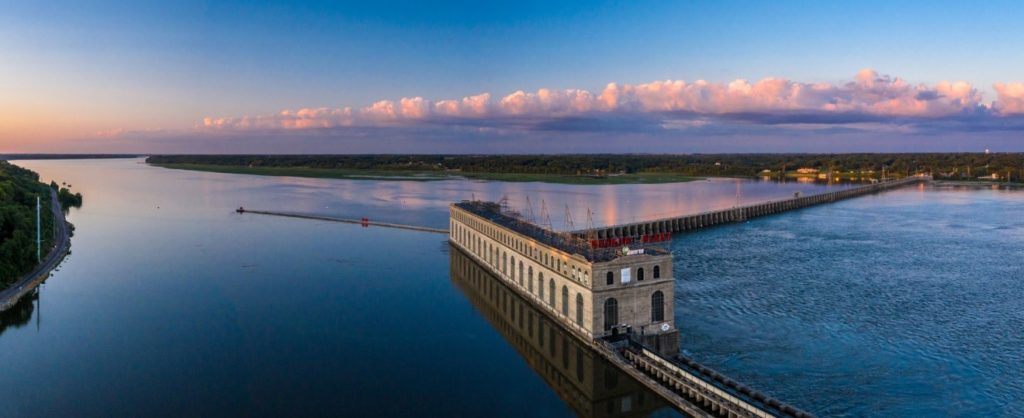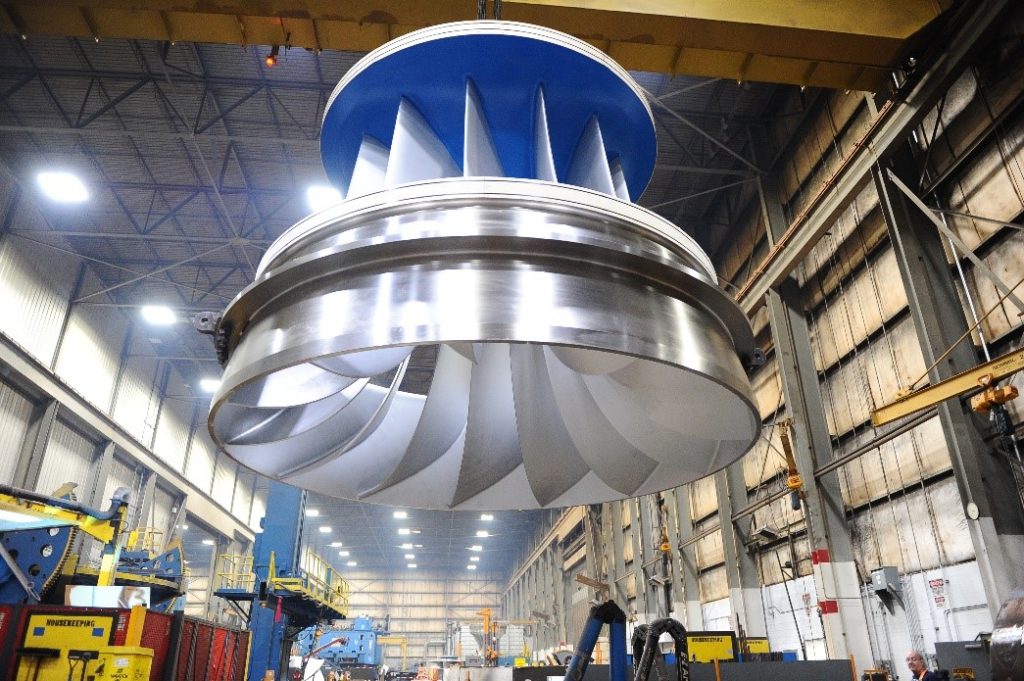Sponsored Content
Over the course of the last 22 years, American Hydro has upgraded 15 units at Ameren Missouri’s Keokuk plant with the last unit going into commercial operation in March 2022.
The original turbines were commissioned around 1913. These units are vertical Francis turbines originally rated at 7.5 MW. Eight of these units were IP Morris turbines; the other seven were Wellman Seaver-Morgan turbines. At the time of commissioning, they were the largest single piece runners in the world.

Highlights for these upgrades are as follows:
Turbine Design
- Between 2000 and 2009, American Hydro replaced nine of the runners and modified the stay vanes to improve the power and efficiency. This design increased capacity by 25% and was developed using CFD analysis and verified through index testing.
- Improved CFD technology identified further performance opportunities and in 2010-11 model testing was performed which led to an updated runner design increasing capacity by another 5%. The model test verified an efficiency increase of 14% over the OEM runner design.
- The remaining six units were upgraded between 2012 and 2022
- Significant increases in capacity and efficiency were gained with the new runners and stay vanes.

Equipment Upgrades and Refurbishment
- New components included Francis runners, wicket gate stems, stay vanes, gate arms and linkage, and conversion to greaseless turbine components.
- Refurbishment of major components included the headcover, bottom ring, wicket gate leaf-stem assembly, thrust bridge, gate ring, guide bearings, thrust bearing, turbine shaft, and generator shaft.
Field Services
- Unit disassembly
- Field refurbishment and modifications included abatement of coating containing hazardous materials, weld installation of stay vanes onto existing stay bolts, in-situ machining of stay ring flanges and bores.
- Unit alignment and reassembly
Safety
Lessons learned were utilized over the course of the outages to reduce construction risks, and this culminated with the best safety record on the final outage. Improvements over the outages included specialized rigging, engineered lift plans, work platforms, safety railings, cradles, tooling, detailed work packages, dedicated safety supervision, and on-site medical support.
Project Management
Over the course of these outages, American Hydro and Ameren have refined plans to minimize outage schedule risk and costs. This started with a commercial approach of releasing contracts for long lead new components well in advance of planned outage dates. This removed new high schedule risk components from the critical path of the outage and freed up engineering and shop resources to focus on the refurbishment of critical path components during the outage. The actual outages were planned in pairs, with units staggered by approximately a month. This allowed American Hydro to fully utilize multiple crews across two shifts for disassembly, field modifications, and reassembly. It also provided more consistency in construction supervision, staffing and maximized the unit specific knowledge and cohesiveness among American Hydro and Ameren’s construction teams. Having this long-term relationship between the project Ameren and American Hydro was greatly beneficial as the two groups maintained consistency within the engineering and management teams. This allowed for effective lessons learned meetings at the close out of projects and joint review of risks and opportunities during the planning phases of each outage.










